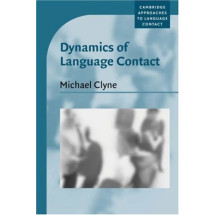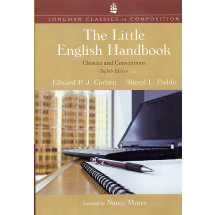List of Figures and Tables xv
Preface xvii
Abbreviations and Symbols xix
Part I Preliminaries 1
1 Semantics in Linguistics 3
1.1 Introduction 3
1.2 Semantics and Semiotics 5
1.3 Three Challenges in Doing Semantics 5
1.4 Meeting the Challenges 7
1.5 Semantics in a Model of Grammar 8
1.5.1 Introduction 8
1.5.2 Word meaning and sentence meaning 9
1.6 Some Important Assumptions 10
1.6.1 Reference and sense 11
1.6.2 Utterances, sentences, and propositions 11
1.6.3 Literal and non-literal meaning 13
1.6.4 Semantics and pragmatics 15
1.7 Summary 17
Exercises 17
Further Reading 19
Notes 19
References 20
2 Meaning, Thought, and Reality 22
2.1 Introduction 22
2.2 Reference 24
2.2.1 Types of reference 24
2.2.2 Names 26
2.2.3 Nouns and noun phrases 27
2.3 Reference as a Theory of Meaning 29
2.4 Mental Representations 31
2.4.1 Introduction 31
2.4.2 Concepts 32
2.4.3 Necessary and sufficient conditions 33
2.4.4 Prototypes 34
2.4.5 Relations between concepts 36
2.4.6 Acquiring concepts 37
2.5 Words, Concepts, and Thinking 37
2.5.1 Linguistic relativity 38
2.5.2 The language of thought hypothesis 40
2.5.3 Thought and reality 41
2.6 Summary 42
Exercises 43
Further Reading 44
Notes 44
References 45
Part II Semantic Description 49
3 Word Meaning 51
3.1 Introduction 51
3.2 Words and Grammatical Categories 52
3.3 Words and Lexical Items 53
3.4 Problems with Pinning Down Word Meaning 56
3.5 Lexical Relations 59
3.5.1 Homonymy 60
3.5.2 Polysemy 60
3.5.3 Synonymy 61
3.5.4 Opposites (antonymy) 63
3.5.5 Hyponymy 65
3.5.6 Meronymy 66
3.5.7 Member-collection 67
3.5.8 Portion-mass 67
3.6 Derivational Relations 67
3.6.1 Causative verbs 68
3.6.2 Agentive nouns 68
3.7 Lexical Typology 69
3.7.1 Polysemy 70
3.7.2 Color terms 71
3.7.3 Core vocabulary 73
3.7.4 Universal lexemes 74
3.8 Summary 75
Exercises 76
Further Reading 78
Notes 79
References 80
4 Sentence Relations and Truth 84
4.1 Introduction 84
4.2 Logic and Truth 86
4.3 Necessary Truth, A Priori Truth, and Analyticity 91
4.4 Entailment 94
4.5 Presupposition 97
4.5.1 Introduction 97
4.5.2 Two approaches to presupposition 98
4.5.3 Presupposition failure 100
4.5.4 Presupposition triggers 101
4.5.5 Presuppositions and context 103
4.5.6 Pragmatic theories of presupposition 104
4.6 Summary 105
Exercises 106
Further Reading 108
Notes 108
References 110
5 Sentence Semantics 1: Situations 112
5.1 Introduction 112
5.2 Classifying Situations 113
5.2.1 Introduction 113
5.2.2 Verbs and situation types 115
5.2.3 A system of situation types 118
5.2.4 Tests for situation types 120
5.2.5 Tense 122
5.2.6 Aspect 125
5.2.7 Comparing aspect across languages 130
5.2.8 Combining situation type and aspect 132
5.3 Modality and Evidentiality 134
5.3.1 Modality 134
5.3.2 Mood 138
5.3.3 Evidentiality 140
5.4 Summary 142
Exercises 143
Further Reading 146
Notes 146
References 147
6 Sentence Semantics 2: Participants 149
6.1 Introduction: Classifying Participants 149
6.2 Thematic Roles 150
6.3 Grammatical Relations and Thematic Roles 155
6.4 Verbs and Thematic Role Grids 156
6.5 Problems with Thematic Roles 158
6.6 The Motivation for Identifying Thematic Roles 161
6.7 Causation 164 6.8 Voice 166
6.8.1 Passive voice 166
6.8.2 Comparing passive constructions across languages 169
6.8.3 Middle voice 172
6.9 Classifiers and Noun Classes 175
6.9.1 Classifiers 175
6.9.2 Noun classes 177
6.10 Summary 178
Exercises 179
Further Reading 182
Notes 182
References 184
7 Context and Inference 189
7.1 Introduction 189
7.2 Deixis 190
7.2.1 Spatial deixis 190
7.2.2 Grammaticalization of context 193
7.2.3 Extensions of spatial deixis 194
7.2.4 Person deixis 194
7.2.5 Social deixis 195
7.3 Reference and Context 196
7.4 Knowledge as Context 197
7.4.1 Discourse as context 198
7.4.2 Background knowledge as context 199
7.4.3 Mutual knowledge 200
7.4.4 Giving background knowledge to computers 201
7.5 Information Structure 203
7.5.1 The information status of nominals 203
7.5.2 Focus and topic 205
7.5.3 Information structure and comprehension 208
7.6 Inference 208
7.7 Conversational Implicature 210
7.7.1 Grice's maxims of conversational cooperation 211
7.7.2 Generalizing the Gricean maxims 214
7.7.3 Relevance Theory 215
7.8 Lexical Pragmatics 217
7.9 Summary 219
Exercises 220
Further Reading 224
Notes 224
References 225
8 Functions of Language: Speech as Action 229
8.1 Introduction 229
8.2 Austin's Speech Act Theory 232
8.2.1 Introduction 232
8.2.2 Evaluating performative utterances 234
8.2.3 Explicit and implicit performatives 234
8.2.4 Statements as performatives 235
8.2.5 Three facets of a speech act 237
8.3 Categorizing Speech Acts 237
8.4 Indirect Speech Acts 239
8.4.1 Introduction 239
8.4.2 Understanding indirect speech acts 241
8.4.3 Indirect acts and politeness 242
8.5 Sentence Types 245
8.6 Summary 247
Exercises 248
Further Reading 250
Notes 250
References 252
Part III Theoretical Approaches 257
9 Meaning Components 259
9.1 Introduction 259
9.2 Lexical Relations in CA 260
9.2.1 Binary features 261
9.2.2 Redundancy rules 261
9.3 Katz's Semantic Theory 262
9.3.1 Introduction 262
9.3.2 The Katzian dictionary 262
9.3.3 Projection rules 263
9.4 Grammatical Rules and Semantic Components 265
9.4.1 The methodology 265
9.4.2 Thematic roles and linking rules 269
9.5 Talmy's Typology of Motion Events 273
9.6 Jackendoff's Conceptual Structure 278
9.6.1 Introduction 278
9.6.2 The semantic components 279
9.6.3 Localist semantic fields 281
9.6.4 Complex events and states 282
9.6.5 THINGS: Semantic classes of nominals 283
9.6.6 Cross-category generalizations 284
9.6.7 Processes of semantic combination 284
9.7 Pustejovsky's Generative Lexicon 287
9.7.1 Event structure 288
9.7.2 Qualia structure 291
9.8 Problems with Components of Meaning 294
9.9 Summary 295
Exercises 295
Further Reading 299
Notes 300
References 301
10 Formal Semantics 305
10.1 Introduction 305
10.2 Model-Theoretical Semantics 307
10.3 Translating English into a Logical Metalanguage 308
10.3.1 Introduction 308
10.3.2 Simple statements in predicate logic 309
10.3.3 Quantifiers in predicate logic 311
10.3.4 Some advantages of predicate logic translation 313
10.4 The Semantics of the Logical Metalanguage 315
10.4.1 Introduction 315
10.4.2 The semantic interpretation of predicate logic symbols 315
10.4.3 The domain 316
10.4.4 The denotation assignment function 316
10.5 Checking the Truth-Value of Sentences 317
10.5.1 Evaluating a simple statement 318
10.5.2 Evaluating a compound sentence with "and" 318
10.5.3 Evaluating sentences with the quantifiers and 320
10.6 Word Meaning: Meaning Postulates 321
10.7 Natural Language Quantifiers and Higher-Order Logic 323
10.7.1 Restricted quantifiers 325
10.7.2 Generalized quantifiers 326
10.7.3 The strong/weak distinction and existential there sentences 327
10.7.4 Monotonicity and negative polarity items 329
10.7.5 Section summary 330
10.8 Intensionality 331
10.8.1 Introduction 331
10.8.2 Modality 332
10.8.3 Tense and aspect 334
10.9 Dynamic Approaches to Discourse 336
10.9.1 Anaphora in and across sentences 337
10.9.2 Donkey sentences 338
10.9.3 DRT and discourse anaphora 339
10.10 Summary 344
Exercises 345
Further Reading 348
Notes 348
References 350
11 Cognitive Semantics 353
11.1 Introduction 353
11.2 Categorization 356
11.2.1 The rejection of classical categories 356
11.2.2 Embodiment and image schemas 358
11.2.3 Linguistic and encyclopedic knowledge 362
11.3 Polysemy 363
11.3.1 Prepositions 363
11.3.2 Modal verbs 368
11.4 Metaphor 369
11.4.1 Introduction 369
11.4.2 Conceptual Metaphor Theory 371
11.4.3 Features of metaphor 372
11.4.4 The influence of metaphor 375
11.5 Metonymy 376
11.6 Mental Spaces 377
11.6.1 Connections between spaces 378
11.6.2 Referential opacity 381
11.6.3 Presupposition 384
11.6.4 Conceptual integration theory 385
11.6.5 Section summary 388
11.7 Langacker's Cognitive Grammar 388
11.7.1 Nouns, verbs, and clauses 389
11.7.2 Construal 390
11.8 Construction Grammar 392
11.9 Summary 394
Exercises 395
Further Reading 398
Notes 398
References 400
Solutions to Exercises 405
Glossary 435
Index 458













